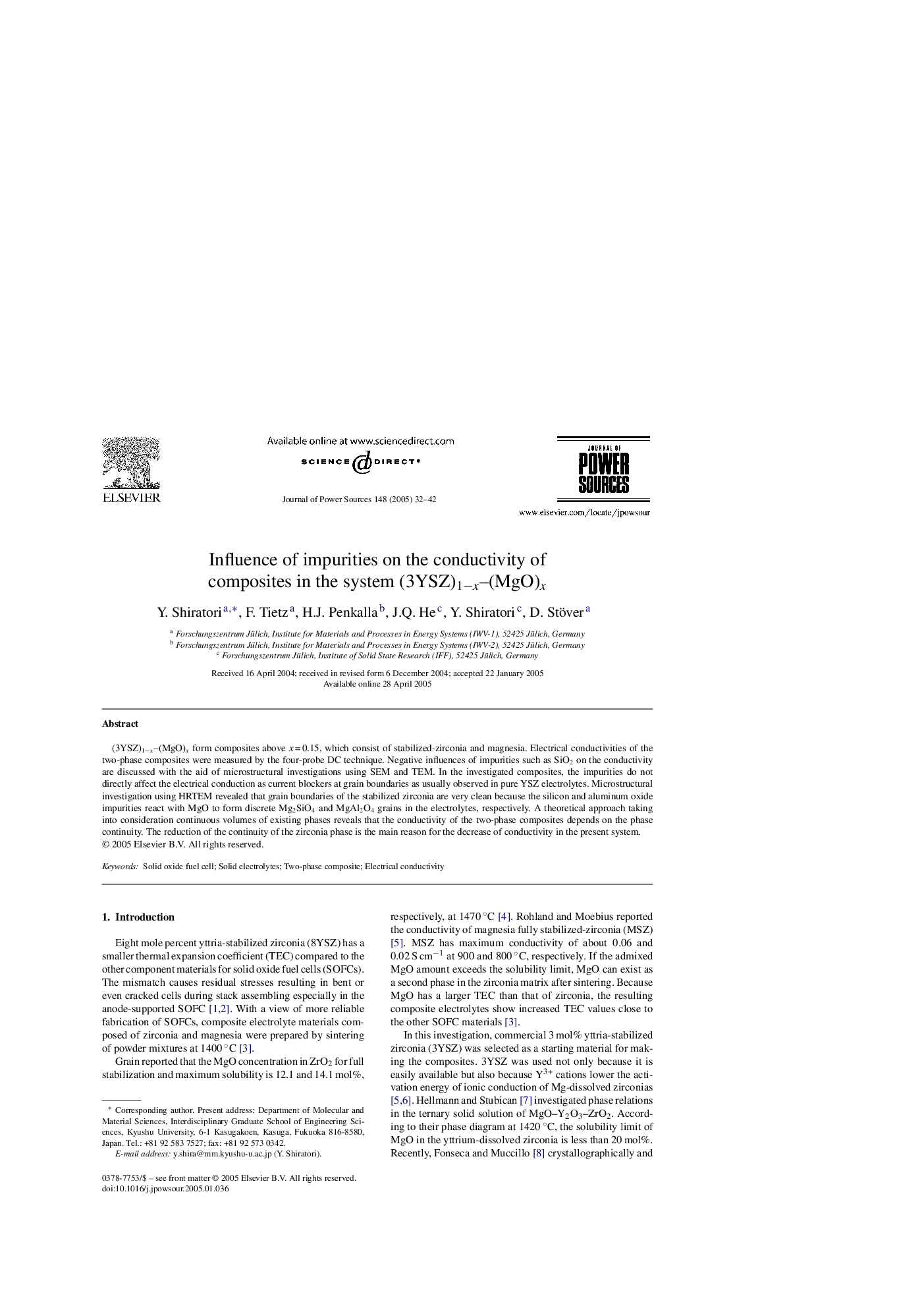| Article ID | Journal | Published Year | Pages | File Type |
|---|---|---|---|---|
| 9760220 | Journal of Power Sources | 2005 | 11 Pages |
Abstract
(3YSZ)1âx-(MgO)x form composites above x = 0.15, which consist of stabilized-zirconia and magnesia. Electrical conductivities of the two-phase composites were measured by the four-probe DC technique. Negative influences of impurities such as SiO2 on the conductivity are discussed with the aid of microstructural investigations using SEM and TEM. In the investigated composites, the impurities do not directly affect the electrical conduction as current blockers at grain boundaries as usually observed in pure YSZ electrolytes. Microstructural investigation using HRTEM revealed that grain boundaries of the stabilized zirconia are very clean because the silicon and aluminum oxide impurities react with MgO to form discrete Mg2SiO4 and MgAl2O4 grains in the electrolytes, respectively. A theoretical approach taking into consideration continuous volumes of existing phases reveals that the conductivity of the two-phase composites depends on the phase continuity. The reduction of the continuity of the zirconia phase is the main reason for the decrease of conductivity in the present system.
Related Topics
Physical Sciences and Engineering
Chemistry
Electrochemistry
Authors
Y. Shiratori, F. Tietz, H.J. Penkalla, J.Q. He, Y. Shiratori, D. Stöver,
